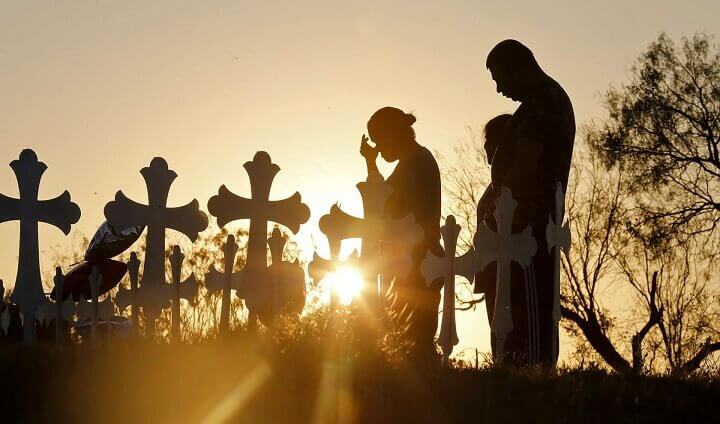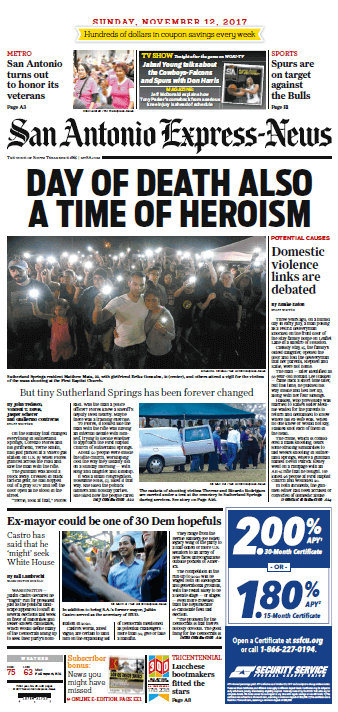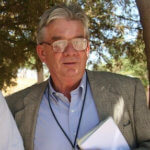
The tragedy at First Baptist Church of Sutherland Springs is incomprehensible. But so is the flood of misinformation about the heinous shooting that left 26 worshipers dead.
If you Google “Sutherland Springs church shooting,” you’d have to wade through 1.4 million search engine results to read everything about the worst mass shooting in modern Texas history. We’ve been drowning in real news, fake news and everything in between.
How are we supposed to make sense of it all?
On Wednesday morning, I thought we might have enough information about the shooting to sift through the verified facts and write a detailed, chronological narrative about what happened.
A team of San Antonio Express-News reporters had spent the past three days in Sutherland Springs, doing the difficult work of interviewing witnesses and trying to figure out exactly what happened. Good Samaritans Stephen Willeford, who shot the gunman, and Johnnie Langendorff, who helped Willeford pursue him, had provided detailed accounts to other media outlets. I thought we could tell the story through the eyes of the survivors and the heroes.
Related: Contact John Tedesco at the Houston Chronicle
We also knew the killer, Devin Patrick Kelley, had been kicked out of the Air Force for abusing his wife and infant stepson and wasn’t supposed to be able to buy firearms — but the Air Force had never reported the domestic abuse case to the FBI, which meant Kelley could pass criminal background checks.
If ever there was a time for narrative journalism, this was it.
 I emailed my editors Wednesday morning offering to cobble together a long narrative telling readers everything we knew at that point. My boss, projects editor David Sheppard, told me to go for it.
I emailed my editors Wednesday morning offering to cobble together a long narrative telling readers everything we knew at that point. My boss, projects editor David Sheppard, told me to go for it.
For any writers tackling a complicated story, the best advice I can offer is to start putting words on the blank page as soon as possible. If you don’t know where to start, that’s OK. Write details from your notes that you know for sure will be going in the story. Flesh out an outline. As your story grows you’ll move things around, figuring out how it all fits together. You finally reach a point where everything gels.
Working from home to avoid distractions, I spent Wednesday and Thursday writing, reading and transcribing interviews, figuring out what information we had and what else we needed.
It’s always a challenge trying to decide how to begin a story. But I quickly found my lede in notes taken by Guillermo Contreras, our federal courts reporter who had interviewed a witness, Lorenzo Flores.
Flores had been standing outside a Valero gas station across the street with his girlfriend, Terrie Smith, when he spotted a man in black tactical gear holding a military-style rifle standing outside the church before the first shots were fired. Flores told Contreras:
“I see this man and he had a high-powered rifle. And I had a bad feeling about it. I said, ‘Terrie, look at that.’ And the guy’s like making up his mind on whether to cross the street or not. Finally, I see him walk across the street from the church. And so, I’m like, there’s something wrong here. I had a bad feeling.”
Those details clicked with me. I chose that moment to begin our 3,400-word article about the tragedy at Sutherland Springs and how two men tried to stop it. The Express-News published it online Friday and it ran in today’s paper.
It’s just one story among thousands.
But I hope it helps make sense of the unthinkable.



